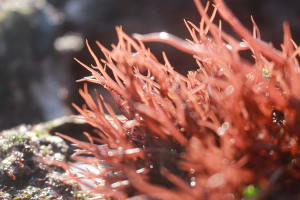There are also differences in their origin. When Gracilaria algae were first used, they were found naturally in coastal areas of Argentina, Chile, Indonesia and Namibia. Cultivation methods were developed to meet the growing demand for these algae, both in ponds and in the open waters of protected bays. These methods have spread from Chile to other countries such as China, the Philippines, Indonesia, Namibia, the Republic of Korea and Vietnam. Gelidium algae only come from natural beds, mainly from Spain, France, Indonesia, Morocco, Mexico, Portugal and the Republic of Korea. On the other hand, unlike Gracilaria algae, which grows easily and has several annual harvests, the Gelidium algae is a small, slow-growing plant with a single annual harvest. Although efforts have been made to cultivate them in tanks and ponds, this was only possible from a biological point of view, because the lack of rocky bottoms and open sea prevents implementing large-scale Gelidium crops in the ocean
Regarding applications, the biggest advantage of Gelidium or Gracilaria agar is its gel point (the temperature at which it turns into a gel). Gelidium agar gels at a lower temperature, which is essential for microbiology applications. Also, Gelidium is the only species that can guarantee a bacteriological agar, as it grows in natural open beds and lacks growth inhibitors. These differences are not as essential in the food industry.
Agarmex has a wide range of products from the Gelidium and Gracilaria algae available for food applications, adapting to consumer requirements. Prioritizing the quality of its products, uses exclusively Gelidium algae for all its bacteriological agars.









